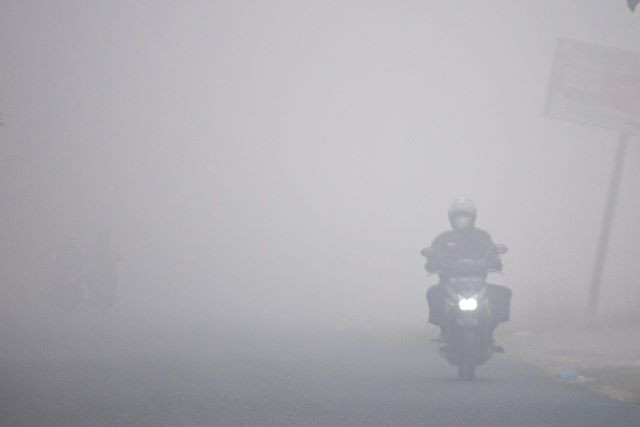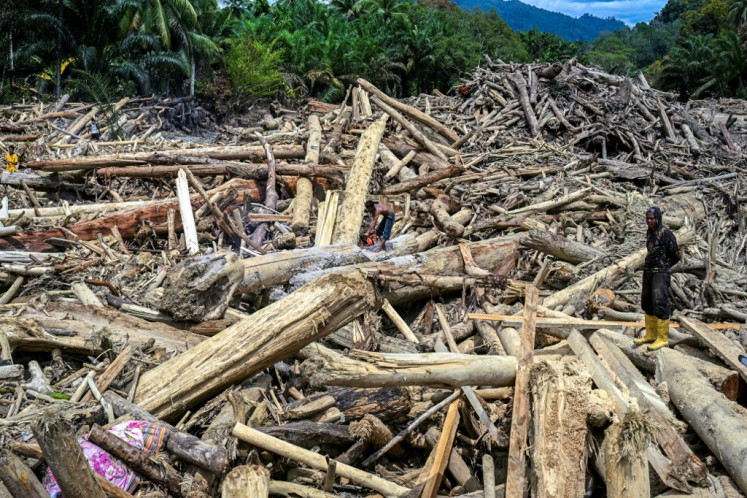Popular Reads
Top Results
Can't find what you're looking for?
View all search resultsPopular Reads
Top Results
Can't find what you're looking for?
View all search resultsQuestioning ADB’s approach to resource conservation and pollution prevention
The safeguard policy revision is a chance for the ADB to demonstrate a genuine interest in listening and responding to issues raised by communities and groups.
Change text size
Gift Premium Articles
to Anyone
I
n 2009, the Asian Development Bank (ADB) established its first Environmental and Social Framework (ESF). Also known as its safeguard policy, this document outlines how environmental and social risks in the projects it finances are managed through avoidance and mitigation measures. It is a tool used by communities harmed by ADB’s projects to hold the bank accountable.
The ADB is currently in the final stages of a lengthy review process that began in 2020 and will end by mid-2024 to adapt to the changing needs. At first glance, the ADB’s draft appears to be a step in the right direction with more than double the number of environmental and social standards (ESS), covering important topics such as climate change and labor and working standards. However, “more” does not necessarily equate to better protection.
Take, for instance, ESS3: Resource Conservation and Pollution Prevention. A close reading reveals several major points of concern stemming from the ADB’s priorities on conservation and pollution prevention vis-à-vis its objectives of delivering development, which has increasingly been with the private sector.
The first issue with the proposed safeguard standard is that while “it seeks to avoid, where avoidance is not possible, minimize, mitigate and compensate for adverse impacts of ADB projects on people and the environment”, it enables borrowers/clients to proceed with activities that cause “unavoidable” adverse impacts to communities and the environment through “offsets”.
These do not prevent project proponents from causing harm and instead encourage them to fund others for compensatory measures. The ADB must stop policy pathways of allowing pollution and greenhouse gas (GHG) emissions as tradable products in the face of the triple planetary crisis of climate change, biodiversity loss and pollution.
In the Global Alliance for Incinerator Alternative’s (GAIA) study of offsets in the Clean Development Mechanism (CDM) on solid waste disposal projects that include incinerators and landfills, such actions did not ensure environmental integrity, nor eliminate social harms.
A clear example of this is the previously ADB-funded Timarpur-Okhla Waste to Energy Venture, which received perverse incentives under the CDM. As far back as 2009, community protests, resident-filed court cases and other forms of opposition have been held against the waste-to-energy plant for releasing hazardous substances (sometimes visible as black smoke), causing economic and physical displacement and threatening nearby wildlife sanctuaries.
What’s more, its actual climate mitigation performance has been criticized for being based on faulty emissions calculations, putting into question its viability as a carbon offset mechanism.
Second, the objectives of conserving resources and pollution prevention cannot be met when the ADB continues to sideline multilateral environmental agreements (MEAs) agreed by the international community on phasing out pollutants. These MEAs set the highest available standards on this topic – even higher than the best practices among international financial institutions (IFIs), including the World Bank.
The ADB’s draft ESF does not align with these legal instruments that have been in place for over a decade to protect people and the environment from the use, production, transportation and disposal of hazardous and toxic substances like mercury, lead and volatile organic compounds: the Basel Convention on the Control of Transboundary Movements of Hazardous Wastes and their Disposal, the Minamata Convention on Mercury, the Rotterdam Convention on the Prior Informed Consent Procedure for Certain Hazardous Chemicals and Pesticides in International Trade and the Stockholm Convention on Persistent Organic Pollutants.
As products of rigorous scientific research and global negotiations, including being legally binding across more than half of the countries in which the bank operates, these instruments should not be left unrecognized and unapplied as they set forth not just aspirations but legal obligations. The effects of overlooking international conventions are apparent in several ADB-supported projects.
Third, the proposed safeguard policy gives prospective and current borrowers/clients the license to operate without addressing the harms first. In other words, it is a “harm now, pay later” approach based on the assumption that harms and benefits will eventually balance out. Polluter Pays, another legal environmental principle that the ESF claims to align with, was not intended in this way.
Many pollutants have been banned by MEAs, which means they are not offsettable. From the start, the bank should be ready to say “no” to projects and proposals that generate hazardous substances, produce significant amounts of waste and other actions that endanger ecosystems and communities.
The bank must not gamble by assuming that “proper management” under voluntary and self-reporting mechanisms can remedy impacts, particularly when borrowers/clients, including financial intermediaries, have precarious track records.
The safeguard policy revision is a chance for the ADB to demonstrate a genuine interest in listening and responding to issues raised by communities and groups. While the new stakeholder engagements are welcome changes to the process, the drafts and discussions do not necessarily reflect the voices of those adversely affected. The Asia Pacific is already challenged with shrinking civic spaces, threats to environmental defenders and barriers to accountability and participation.
The challenge of achieving climate resiliency and equitable development is huge and, indeed, the ADB cannot do it on its own. But it cannot continue to offer cheap and easy financing mechanisms for the private sector at the risk of the poorest people and the planet.
We urge the bank to raise its ambitions, make offsetting pollution a thing of the past, align with international legal instruments and make meaningful consultations as a foundation of its safeguard policy.
***
The writer is a GAIA Asia Pacific climate and anti-incinerator campaigner.











